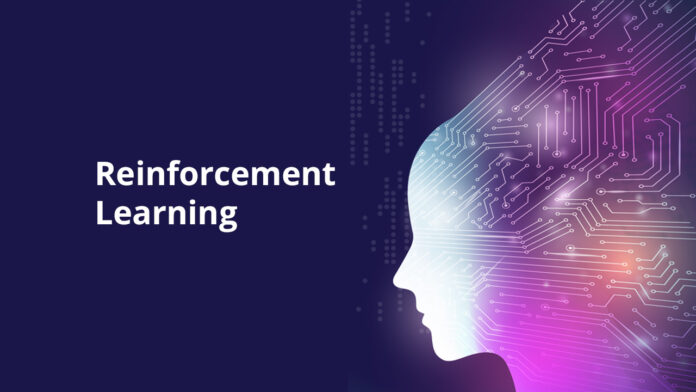AI and machine learning (ML) have become household terms these days, even among those unfamiliar with these terms. Researchers estimate that 77% of devices we currently use contain AI within them – such as “smart” devices for entertainment streaming via Netflix to products like Amazon Alexa and Google Home; AI technology now plays a crucial part in modern life.
AI and ML technologies have many innovative uses. IBM’s Chef Watson can generate quintillions of possible combinations from just four ingredients; AI-powered virtual nurses such as “Molly” and “Angel” have already proven invaluable, saving lives and costs, while robots provide assistance in everything from less invasive procedures to open-heart surgery.
With the increased interest and demand for AI/ML technologies, many new trends are developing within this space. If you work in technology in any capacity, it’s exciting to observe what lies ahead regarding AI and Machine Learning trends.

AI and machine learning trends include the growing adoption of cloud platforms for data activities – speeding up the adoption of AI/ML tools for business data analysis. According to Gartner, more than 50% of enterprise IT spending across key market segments will move toward cloud services by 2025.
Recent advancements in AI and machine learning solutions have had a profound effect on the global data technology market, manifesting as chain reactions that may be summarized as follows.
AI development companies and composable analytics solutions have enabled organizations to explore large and small, structured and unstructured datasets by applying techniques that search for actionable insights even in microdata tables.
Stream-first architectures and streaming data analytics have seen widespread adoption within companies, particularly IoT applications and real-time data acquisition and processing applications. Artificial Intelligence development company USA have seen their need for real-time data ingestion increase significantly recently – this trend will only grow further throughout 2019.
Enterprises remain under pressure to adopt data management strategies that enable them to access actionable insights from an increasingly expansive collection of data to make key business decisions. Multiple factors – such as compliance requirements, greater use of Data Quality tools to maintain quality, and an increasing desire for master data management across various domains – should drive an upsurge in MDM technologies and services adoption.
Gartner analysts project that by 2025, 70% of enterprises will shift away from big data toward smaller and wider sources, providing a better context for analytics and smarter decisions.
What Is The Current Scenario Of AI And ML?
The current scenario of Artificial Intelligence (AI) and Machine Learning (ML) is marked by rapid growth, adoption, and advancements in various fields. Here are some critical aspects of the current AI and ML landscape:
1. Increased Adoption

AI and machine learning technologies are becoming more ubiquitous across industries and sectors, as businesses leverage them to automate processes, gain insights from data analysis, improve decision-making processes, enhance customer experiences, and promote innovation.
2. Progress in Deep Learning
Deep learning (DL), one subset of machine learning (ML), has seen phenomenal progress over recent years. Deep neural networks have proven their worth in fields as diverse as image recognition, natural language processing, and speech synthesis. Advancements in architectures, algorithms, and computational power have all played their parts to accelerate deep learning applications.
3. Expansion of AI Applications
AI and ML are being applied in a wide range of domains. They are used in autonomous vehicles, healthcare diagnostics, fraud detection, recommender systems, virtual assistants, cybersecurity, finance, manufacturing, and many other areas. The versatility of AI and ML enables their deployment in diverse industry sectors.
4. Ethical and Responsible AI
Since AI systems can have significant effects on society and legal frameworks, greater emphasis has been placed on ethical considerations and responsible AI practices. Concerns such as bias, fairness, transparency, privacy, and accountability are being addressed to ensure AI systems are developed and deployed according to societal values and legal requirements.
5. Natural Language Processing (NLP) Advancements

NLP has made significant progress, enabling machines to understand, interpret, and generate human language. Technologies such as voice assistants, chatbots, language translation, sentiment analysis, and text summarization have improved, enabling more natural and effective human-computer interactions.
6. Edge Computing and AI at the Edge
The proliferation of edge computing devices, such as IoT devices, smartphones, and edge servers, has driven the development of AI at the edge. AI models are being deployed directly on edge devices, enabling real-time processing, reduced latency, and enhanced privacy.
7. Data Availability and Data Privacy Concerns
The availability of large volumes of data has been crucial for training AI and ML models. However, there are ongoing concerns about data privacy, security, and compliance with regulations such as GDPR (General Data Protection Regulation) and other data protection frameworks. Striking a balance between data utilization and privacy remains an ongoing challenge.
8. Continued Research and Development

AI and ML research continue to advance, with ongoing efforts to develop new algorithms, improve model interpretability, address limitations in existing approaches, and explore emerging areas such as explainable AI, federated learning, and lifelong learning.
It’s important to note that the AI and ML landscape is continuously evolving, with new developments and breakthroughs occurring regularly. Keeping up with the latest research, trends, and applications in AI and ML is crucial for staying informed about the current scenario.
Latest Trends in AI And ML To Take Over in 2024
Artificial intelligence, which has evolved dramatically over time and can now solve even complex issues, holds the key to the future. Artificial intelligence is now widely employed by businesses and organizations to meet needs they once thought were insurmountable by using some of these technological advancements:
1. Continued Advancements in Deep Learning
Deep learning techniques, such as convolutional neural networks (CNNs) and recurrent neural networks (RNNs), are likely to continue evolving. There may be further improvements in model architectures, optimization algorithms, and training techniques, leading to better performance and efficiency in various applications.
2. Explainable AI (XAI)
As AI systems become more complex and critical for decision-making, there is a growing need for explainability and interpretability. Researchers are working on developing methods and techniques that enable AI models to provide transparent explanations for their outputs, increasing trust, and enabling better human-AI collaboration.
3. Reinforcement Learning (RL) Advancements

RL, which involves training agents to make decisions through trial and error, has shown promise in areas such as robotics and game-playing. Ongoing research is likely to focus on improving sample efficiency, exploration strategies, and generalization capabilities of RL algorithms, making them more applicable to real-world scenarios.
4. Federated Learning
Federated learning allows the training of ML models across distributed devices or systems while keeping the data decentralized and ensuring privacy. It enables collaboration and model training without the need for centralizing data. Research and development efforts are expected to continue in this area to address challenges related to communication efficiency, security, and scalability.
5. Edge AI
Edge computing and AI at the edge are gaining prominence. With the proliferation of edge devices and the need for real-time processing, AI models are being deployed directly on edge devices, enabling faster inference, reduced latency, and enhanced privacy. This trend is likely to continue with advancements in hardware and software technologies.
6. AI for Healthcare

AI and ML are increasingly being applied in healthcare for diagnostics, drug discovery, personalized medicine, and remote patient monitoring. Continued research and development in this field may lead to advancements in medical imaging analysis, predictive analytics, and the development of AI-based tools for disease detection and treatment.
7. Responsible AI and Ethical Considerations
As AI becomes more integrated into various aspects of society, there will be a continued focus on responsible AI practices. Attention to issues such as fairness, bias, privacy, and accountability will grow, leading to the development of guidelines, regulations, and frameworks for ethical AI development and deployment.
These trends are based on the current trajectory of AI and ML and are subject to change as discoveries and breakthroughs emerge. It’s essential to keep up with the latest research and industry developments to stay informed about the specific trends and advancements in the field of AI and ML for 2024.
In Conclusion
The field of Artificial Intelligence (AI) and Machine Learning (ML) is expected to witness several significant trends and advancements in 2024. Advancements in deep learning, including improved architectures and optimization algorithms, will continue to drive performance and efficiency in various applications. Explainable AI (XAI) will gain importance, as researchers strive to develop methods that enhance the transparency and interpretability of AI models. Reinforcement Learning (RL) is expected to see further developments in sample efficiency, exploration strategies, and generalization capabilities.
Federated Learning will continue to evolve, enabling collaborative model training while preserving data privacy and decentralization. Edge AI will gain prominence, with AI models being deployed directly on edge devices for faster inference and enhanced privacy. The healthcare sector will witness increased utilization of AI and ML for diagnostics, drug discovery, personalized medicine, and remote patient monitoring.
Responsible AI practices will be a key focus, addressing issues like fairness, bias, privacy, and accountability. Ethical considerations will guide the development and deployment of AI systems.
While these trends provide a general overview, it’s important to stay up to date with the latest research and industry developments to gain deeper insights into the specific trends and advancements in AI and ML for 2024. The field is dynamic and subject to constant innovation, making it essential to keep a pulse on the latest developments to harness the full potential of AI and ML technologies.









